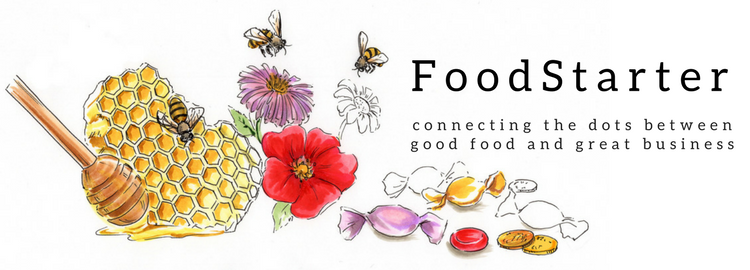 Have you ever wondered why hand made artisan farmstead cheese is so costly?
Have you ever wondered why hand made artisan farmstead cheese is so costly?
A visit to Krugerrand Farms, a daughter and father goat cheese operation in upstate New York, gave me all the answers. Here’s a short list:
- The high cost of goating: feed, hay, and general caretaking
- The time to individually milk 60-odd goats
- The 1.5 gallons of fresh goat milk (about 10 pounds) it takes to make each pound of cheese. (After it gets finished aging it comes out to about 12 lbs of milk to a pound of cheese.)
- Many hours to make each wheel of cheese (check out all the steps below; I left all the time cleaning up out, but this place is clean!)
- Then many hours to wash the natural rind off the cheese before delivering it to customers
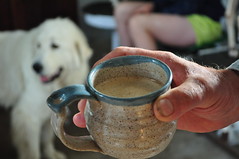 However it’s all worth it. Here I’d like to share my delightful visit and give you a taste of the story, love and labor that goes into Krugerrand Cheese. As well as the visual here of my latte made with milk straight from the goat. (Instant foam!)
However it’s all worth it. Here I’d like to share my delightful visit and give you a taste of the story, love and labor that goes into Krugerrand Cheese. As well as the visual here of my latte made with milk straight from the goat. (Instant foam!)
Making Cheese – From Goat to Grate
Morning begins with the “running of the goats” – into the barn that is. There they await their milking and munching. The farm has a variety of goats, some prize winners. Lisa is a co-owner of the cheese company and also recently graduated with a civil engineering degree from a Michigan college.
Lisa and James Andela love their goats, which they milk each day. The goats – each who they know by name – eat natural feed during the milking.
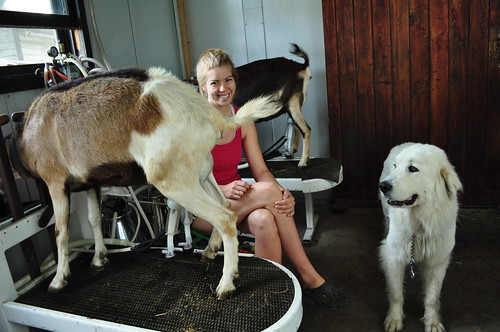
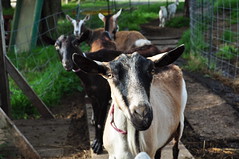
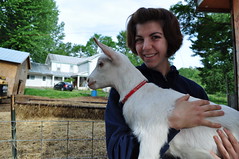
Every other day, Lisa and Jim make cheese. This one vat makes about 30 pounds of cheese. Each pound of cheese takes 9-10 gallons of goat milk. During the aging process, due to the natural rind, the cheese evaporates which is important to factor in when calculating the cheese making costs.
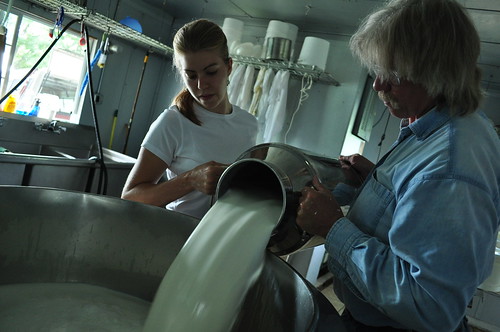
This was the most fun part! There’s a horizontal and a vertical slicer and running it through the vat breaks up the soft curd into chunks.

Working the curds by hand lets the cheese maker more closely monitor the progress of heating and texture of the curds. Lisa gathers the curds to mold into wheels.
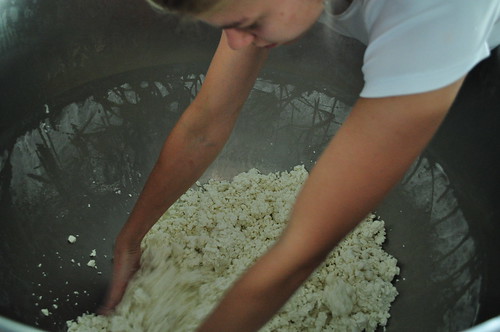
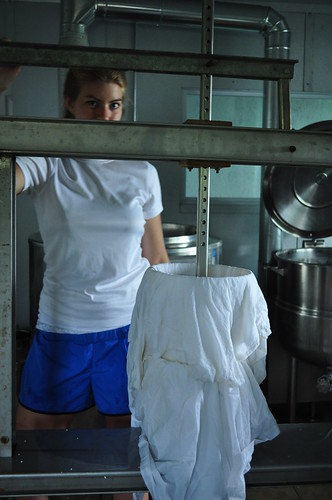 The pressed curds go through several stages before they’re ready to be aged. First it’s put in the brine (salt) solution for a couple of days. The brine creates the protective layer.
The pressed curds go through several stages before they’re ready to be aged. First it’s put in the brine (salt) solution for a couple of days. The brine creates the protective layer.
Then the cheese drains and dries for a couple of weeks on racks, before getting ready to hibernate to its glorious state of aged-ness.
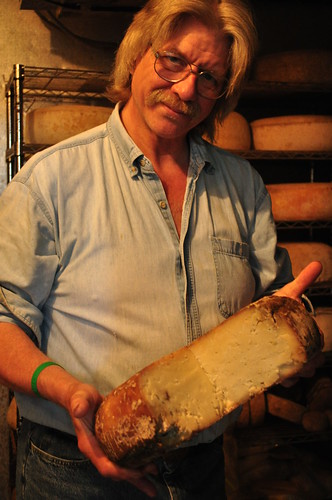 The raw milk cheeses are aged for about 6 months (2 months is the minimum raw milk cheese needs to be aged in the U.S.)
The raw milk cheeses are aged for about 6 months (2 months is the minimum raw milk cheese needs to be aged in the U.S.)
All of the cheeses have natural rinds, and it takes a lot of scrubbing to “clean them” before the team ships them out to cheese shops, restaurants, and cheese lovers.
Learn more about Krugerrand Farm and the qualities of their cheeses.
You can also find them on Foodzie.
Want to visit Krugerrand Farms?
They’re looking into agri-tourism stays and WWOOFing so you too might be able to make a goat milk latte!






